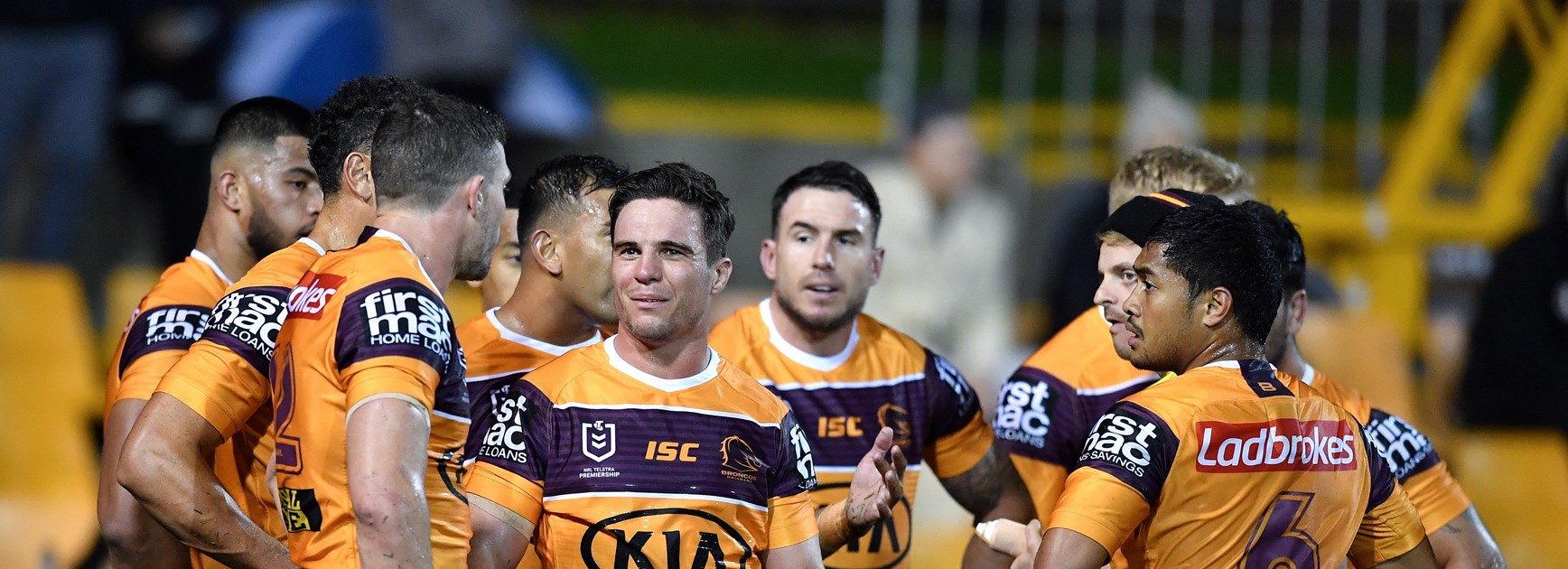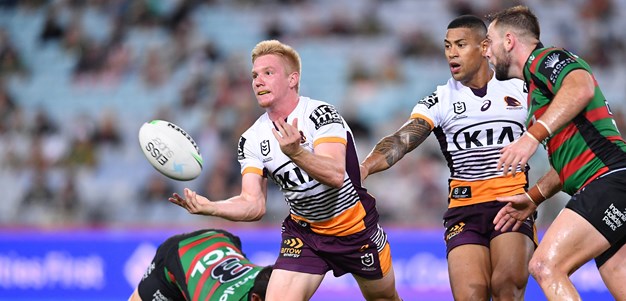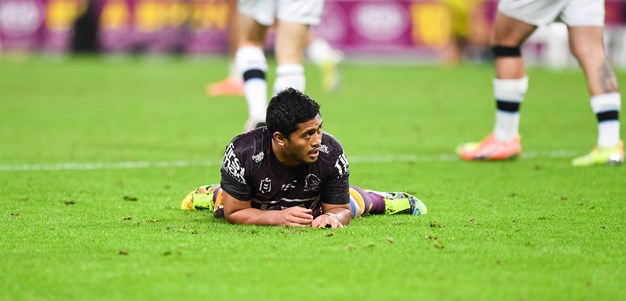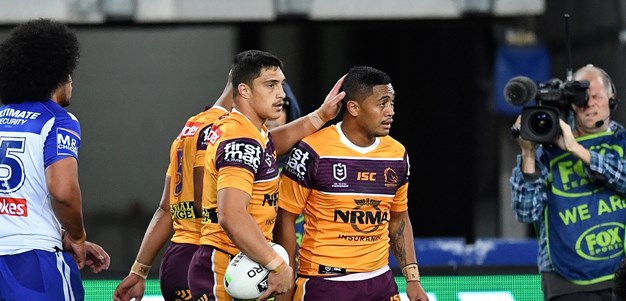
The Broncos are playing like a team of strangers and are light years away from the premiership-winning connected units the club was once famous for producing.
How did it get to this?
Google "connection and cohesion" along with Anthony Seibold, and you'll see that on many occasions the coach has used those words to describe what he is trying to build at Brisbane.
On May 25 the Broncos coach said he was working with an organisation called Gain Line Analytics to build teamwork.
"One of the things we learn is that the more you play with someone, the more trust you build in that connection and cohesion across the group," Seibold said.
After watching them for the past year and a half it is hard to say exactly what "Broncos style" is because there is very little continuity in attack.
Did Seibold pull the right rein with fullback switch?
Wrack your brain and think about a play that is repeatedly used successfully and it is hard to come up with one.
So often Brisbane's attack has appeared pointless and on five occasions in the past eight games they have failed to score in the second half.
Four-time premiership winner Steve Renouf has a three-minute highlight package that is shown when he does guest speaking events, where a lot of his tries come on the back of an "out ball" from Kevin Walters.
Renouf would run into space outside his opposite number and Walters would throw the pass. This went on for year after year and was a key reason why the centre scored a club record 142 tries.
"We had a lot of variations on that play, but Wayne Bennett was big on muscle memory and it was all fine-tuned with hours of practice," Renouf said.
It is a team sport and communication is key. We want to drive talk
Broncos coach Anthony Seibold
"Wayne would let Kevin and I work on it ourselves, but with his faith and our own hard work it became a big part of our repertoires."
The Broncos have used simple but effective plays years apart, and with different participants, to win grand finals.
In the 2000 grand final win over the Roosters, Walters and halves partner Ben Ikin fed Darren Lockyer, who accelerated outside the defence and gave an inside ball for Lote Tuqiri to score.
The try is almost a carbon copy of one Justin Hodges scored six years later against Melbourne in the 2006 decider, also from a Lockyer inside ball.
It was the ultimate "connection and cohesion" try and one Bennett told NRL.com was planned and executed to perfection.
It would be easy to blame injuries in key positions as the reason for their lack of attacking cohesion, but Canberra and Manly lost their chief attackers in the spine and managed to beat the Roosters and Eels respectively last round.
The halfway mark: Tackle of the year
Last year the Broncos had an extended run with Darius Boyd and Jake Turpin in the halves, Andrew McCullough at hooker and Anthony Milford at fullback.
After the 58-0 finals loss to the Eels, they rearranged their spine again and started this season, after losing Jack Bird to injury, with Jamayne Isaako at the back, new signing Brodie Croft and Milford in the halves and Turpin at hooker.
Injuries and lack of form have led to changes at fullback and hooker but the overall result has been the same.
Against Melbourne on Friday, Croft and Tom Dearden are in the halves and Milford reverts to fullback.
"I'd like to see them in those positions for an extended run and give them an opportunity to build some cohesion and connection," Seibold said.
The Broncos' 59-0 loss to the Roosters and the 48-0 drubbing at the hands of the Wests Tigers were two debacles with the defence in the middle and on the edges paper-thin.
Bellamy defends Croft
Against the Tigers there was no communication as defenders went solo and made the wrong decisions - Isaako almost clashed heads with Boyd as Luke Garner strolled over for a try.
Underneath the goalposts the players appeared silent, but Seibold said "you don’t want guys talking under the sticks".
"I'd rather guys talked in their roles whilst they are defending and on both sides of the footy," he said.
"It is a team sport and communication is key. We want to continue to drive talk.
"Sometimes when you have a score put on you like that, talk is pretty cheap. You need to do some things with your actions and that is what we are looking for."
They have the worst defensive record in the league, but successful Brisbane teams have relied on communication and trust in defence.
"In the 1990s on the left it was Michael Hancock, I was the second man in and Kevin Walters third," Renouf said.
"Kevin got targeted because of his size and as a key player they tried to tire him out, so every now and then he would give me a nod and we would swap so he got a break.
"The thing Wayne had taught us was to respect the man beside you and to trust them, and we definitely trusted each other.
"Watching the Broncos last week there was no trust in the defensive line."
The halfway mark: Try of the year
When Seibold arrived at the club in December, 2018 he spoke of the incremental gains players needed to make as the team eyed off climbing the "peakless mountains" of success that the coach likened to the continual quest for improvement.
Instead of ascending a peakless mountain they have slid into more of a bottomless pit. The reason is clear - no connection and no cohesion.
Renouf said it would be a fallacy to place the blame solely on the coach.
"I don't believe Anthony Seibold should take all the blame for the lack of cohesion in the team because the senior players are offering very little," he said.
"It is up to guys like Darius Boyd and Anthony Milford to do more on the field rather than standing around like stunned mullets."
They get their chance on Friday against the Telstra Premiership's ultimate "connected" team, the Melbourne Storm.
The views in this article do not necessarily express the opinions of the NRL, ARLC, NRL clubs or state associations.






